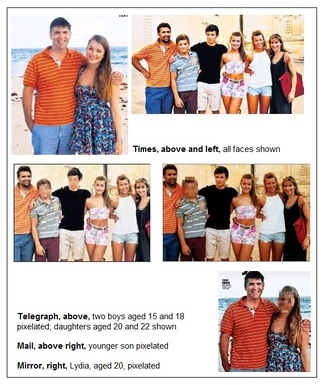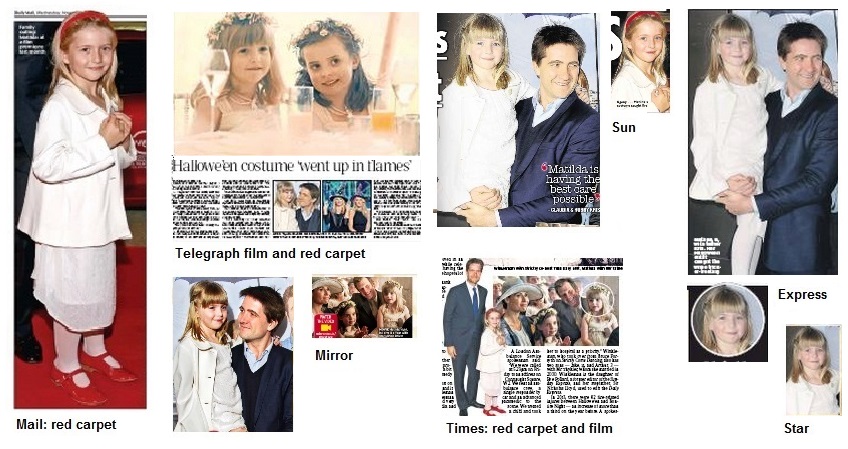
conflicting approaches to publishing photographs
of minors, so SubScribe invited Paul Sanders,
former picture editor of the Times, to put us
in the picture by focusing on three recent cases
When I was picture editor at The Times the rule was that we needed the permission of the parent before identitying a child under 16. If we were in doubt we would protect the identity. The former editor Robert Thomson suggested that I put myself in the place of the parents and consider whether I would want my own child identified in print over an event for which they were not to blame.
There is some collaboration between picture desks on the treatment of images where identity might be an issue, but different publications have different approaches. Some are more daring others more sensitive.
Clause six of the Independent Press Standards Organisation code of practice states:
- Young people should be free to complete their time at school without unnecessary intrusion.
- A child under 16 must not be interviewed or photographed on issues involving their own or another child's welfare unless a custodial parent or similarly responsible adult consents.
- Pupils must not be approached or photographed at school without the permission of the school authorities.
- Minors must not be paid for material involving children's welfare, nor parents or guardians for material about their children or wards, unless it is clearly in the child's interest.
- Editors must not use the fame, notoriety or position of a parent or guardian as sole justification for publishing details of a child's private life.
These five points seem fairly clear, but it can get confusing at times and we have recently seen papers pixelate the faces of some children and not others.

The judge, after sentencing Cornick, lifted the restrictions on his identity, the police issued an image and the media all used it as they should. No stress involved for picture editors at all.
[Editor's note: the judge was criticised in some quarters for allowing Cornick to be identified.]

Because of the nature of the story an image of the family during happier times appeared from Ross Parry via South West News.
The image was given to the agency by family friends who confirmed the ages and identities.
Paul Walters, director of South West News and Ross Parry said: "In the case of children under the age of 16 we tend to pixelate the faces or at the very least add a warning to the captions advising picture desks that it is advisable to obscure the identity of children unless we have the permission of their parents to identify them”
The agency will issue a clean image for newspapers to pixelate the image in their own style. At this point it is at the discretion of each publication as to whose identity should be protected and how.
The fifth paragraph in the code states that the fame of a parent cannot be the sole justification for publishing images. Some celebrities make a point of protecting their children's privacy and many issue written instructions explaining why they don’t their children appearing in news articles.
The case of Claudia Winkleman’s daughter, Matilda, is different. She appeared in the film I Give It a Year and was on the red carpet for its premiere. There are film stills released by the production company of her as a bridesmaid and agency pictures of her appearing with her parents at several public events.
The decision here is straightforward: the parents can be regarded as having sanctioned the pictures by appearing with their daughter at a public event in the full knowledge that they are all being photographed.
It would, however, have been deemed an invasion of privacy to have published images of Matilda on the night of the accident as it wasn’t a public event.
Incidentally, most newspapers put Claudia on the front, confining the images of the child to the inside. Was that out of respect - or because Claudia was more likely to sell newspapers than her largely unknown daughter?



 RSS Feed
RSS Feed


